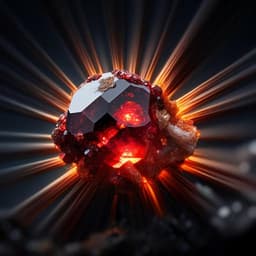
Engineering and Technology
All-dielectric metasurface for high-performance structural color
W. Yang, S. Xiao, et al.
Discover the groundbreaking research by Wenhong Yang and colleagues on high-performance structural color achieved through a silicon metasurface. Their innovative approach significantly enhances brightness and color purity, surpassing conventional color gamuts, and even approaches Rec.2020. A major leap in optical technology awaits you!
Playback language: English
Related Publications
Explore these studies to deepen your understanding of the subject.







